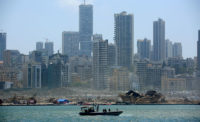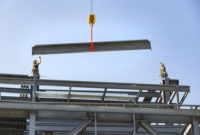In its so-called Fight Plan 2037, Vancouver International Airport identifies 75 projects as part of a 20-year, $5.6-billion improvement plan, which expands everything from terminals to a potential new runway.
Flight Plan 2037’s master plan will enter its third phase in January. When the period for community feedback ends on Feb. 20, the plan will move to Canada’s federal minister of transport for review and approval, the final step before work can start at the airport on Sea Island in Richmond, British Columbia.
The airport hit a record 22.3 million passengers in 2016 and is operating at 88% capacity with 100% capacity predicted by 2020.
The plan establishes a capital program for a capacity of 35 million by 2037. The airport expects to use an airport improvement fee and its AA credit rating to pay for the projects’ costs, with no public funds.
By expanding the facility in five separate directions, the airport keeps one large terminal, instead of creating a new structure in a different area. The project’s first step likely will be the addition of four new gates to the international terminal, dubbed Pier D. Groundbreaking is expected in 2017 and completion by 2021. Contingency plans include adding, as needed, four future gates.
Craig Richmond, president and CEO of the Vancouver Airport Authority, says he expects Vancouver to remain a critical gateway from North America to Asia. With its 15% growth last year in international passengers, Vancouver International Airport offers more direct flights to mainland Chinese destinations than any other airport in the Americas or Europe.
Other key projects include a second parking garage, parallel taxiways, a new geothermal plant and, potentially, a new runway into open water. The plan also calls for improved ground access.
Richmond says, “This plan is built to provide for the long-term capacity needs of [the airport] while meeting and enhancing our sustainability goals and ensuring we build in an incremental fashion.”





Post a comment to this article
Report Abusive Comment